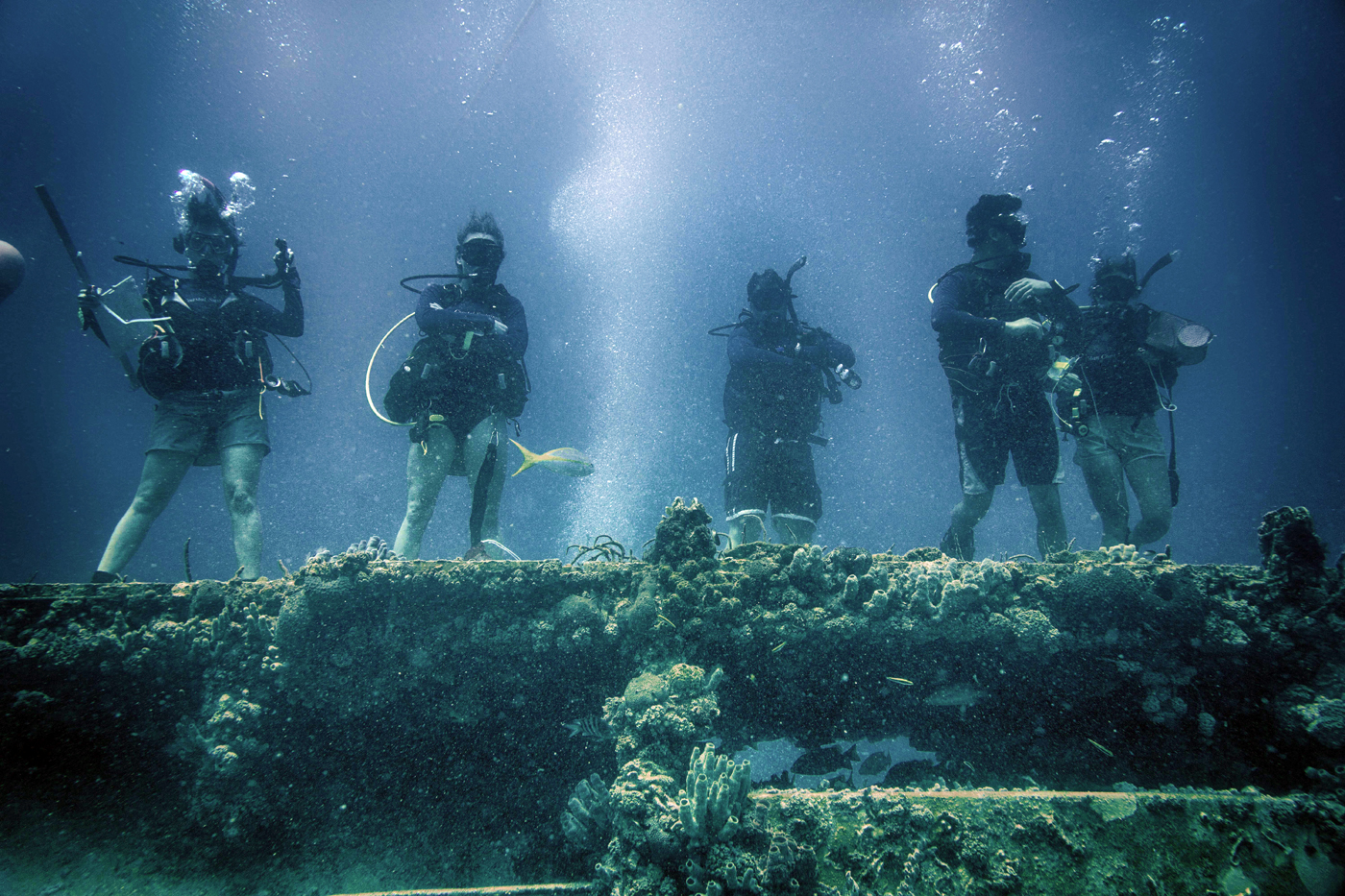by Angela Herring
Some scientists get to have all the fun. Last week my colleague Joan Lynch and I made the trip up to Nahant to visit with a team of marine researchers based at Northeastern’s Marine Science Center. They’d just returned from a monthlong underwater research expedition led by Fabien Cousteau, grandson of the late great Jacques Yves Cousteau and they were clearly still reeling from the incredible experience.
Joan and I expected we’d meet with professors Brian Helmuth and Mark Patterson, who were science advisers for Mission 31, and with Liz Bentley Magee, the program coordinator for Northeastern’s Three Seas Program, who participated in the mission as an aquanaut. Instead we got to hang out with those three, plus almost the entire rest of the team. This included three graduate students, two research technicians, one administrative assistant, and an embedded teen journalist. Another grad student couldn’t make it because she had to go to Mauritius to carry out some more research (see what I mean?).
The group told us that they accomplished a staggering amount of work while they were in Florida for the Mission, which took place at Aquarius, the last remaining underwater research station. Two years’ worth in just two weeks, to be exact. But even more than data, Brian Helmuth told us, was the quantity of fun they wracked up.
Each day the so-called “topside” researchers would make about three dives down to Conch Reef, where Aquarius is based. They’d check on their existing experiments, set up new ones, take measurements, and just generally have a science field day. They accomplished about 100 hours worth of work during the mission but it was Liz’s saturation diving that allowed the team to soar above even their highest data-collection expectations.
Saturation means that Liz’s body had saturated with nitrogen. Under normal circumstances, this isn’t a good thing because it’s a long process to desaturate and you can’t come back to the surface too quickly without getting sick with “the bends.” But since Liz and the other Mission aquanauts had no immediate plans to surface, this wasn’t a problem. It meant that she was able to go on the longest dives of her life, to collect data throughout the day from experiments that would have otherwise been infeasible, and to simply sit and observe underwater life in a way she never had in her 10 years of diving. Once it was finally time to say goodbye to Aquarius, Liz and the other aquanauts spent almost an entire day slowly bringing their bodies back up to surface-level nitrogen concentrations before they finally swam back up.
During our interview, Joan and I got to listen to a group of people talk about their work in a way that I normally only hear when people reminisce about an amazing vacation or an epic rock concert. There was a ridiculous amount of laughter and glee as they recounted everything from Liz’s charactersitic underwater clapping to the way a trumpet fish living outside the habitat aligned its long, thin body with a tripod set up for one of the experiments. They noted how “JYC,” a 200-pound grouper living outside Aquarius who’s named for the elder Cousteau, would watch over the habitat, protecting it from intruders.

Members of Mission 31 stand atop Aquarius, the last remaining underwater research habitat.Photo courtesy of Francis Choi.
They laughed at the nitrogen-narcosis-induced science jokes that Liz recorded with her fellow aquanaut Grace Young, but marveled at the advances that research at Aquarius can afford for urban coastal sustainability. The habitat, they told us, has become a fully-integrated part of the environment sitting within eyesight of the shore. Normally, researchers go to completely pristine environments to learn how systems function on their own, but it’s becoming more and more important to study exactly how human impact features in those systems. Conch Reef and Aquarius–which has become a fully integrated member of that reef–give researchers the ability to study how we can live with the environment, not separate from it.
As Morgan Helmuth–Brian’s 13-year-old daughter who kept a blog from the topside headquarters–said, science isn’t always a pristine lab with people sitting around looking through microscopes. “Science is a lifestyle,” she said, and the attitudes in the room clearly demonstrated that sentiment. These folks aren’t here for the perks–although there are many–of a life on the sea. They’re here because they love the data and what it could mean for the world, just as much as they love collecting it.
This story was originally posted by Northeastern’s iNSolution blog on July 25, 2014.

